US correspondent Thomas May speaks with Bach Festival Society director John V. Sinclair about the significance of the new Mozart discovery, which he has programmed side-by-side with the Requiem for the season-opening concert on 3 November.
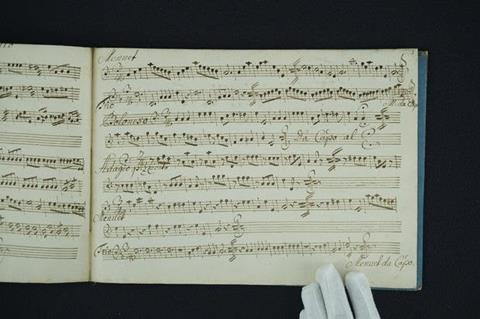
The music world is still abuzz with the startling discovery of a Mozart composition: a serenade for string trio from the composer’s early years. For its upcoming concert on 3 November, the Bach Festival Society of Winter Park has become one of the first professional ensembles to date to add the new find to the programme.
Playfully nicknamed Ganz kleine Nachtmusik (‘A very little night music’) because of its brevity – in analogy with the famous, much later serenade Eine kleine Nachtmusik from 1787 – the official name of the piece is Serenade in C and has been assigned the number K648. The manuscript was discovered in Leipzig’s municipal music library during research by experts from the International Mozarteum Foundation for the new edition of the complete Köchel catalogue of Mozart’s works. Although the find is an unsigned copy not in Mozart’s hand, scholars have determined its authenticity and date the piece to sometime in the 1760s, just before or during the composer’s early teen years.
The official modern premiere of Ganz kleine Nachtmusik took place, appropriately, in Salzburg on 19 September 2024 and was then presented at Leipzig Opera several days later. Deutsche Grammophon has already released three world premiere recordings digitally: two for chamber ensembles and one arranged for chamber orchestra. But the Bach Festival Society’s performance marks the official live premiere on the US East Coast, according to BFS.
‘It is not every day that a new Mozart single drops’, jokes John V. Sinclair, who has served as the BFS’s artistic director and conductor for more than three decades. In its 90th season, the Bach Festival Society is the third oldest continuously operating Bach Festival in the United States as well as Florida’s oldest musical organization. The 3 November concert in Orlando will pair Ganz kleine Nachtmusik with Mozart’s Requiem; also on the programme are Sibelius’ Finlandia and the world premiere of Ted Ricketts’ Songs of War and Peace.
‘It is not every day that a new Mozart single drops’
John Sinclair shares some thoughts about the significance of the find.
The Bach Festival Society of Winter Park is a large oratorio society with a distinguished history of performing monumental choral–orchestral works. What inspired you to programme what is essentially a chamber music miniature?
John V. Sinclair: The big oratorios are of course in our wheelhouse, but we also do a full season of visiting artists and have chamber music events. When we were able to obtain the score of the new trio, I thought it would be interesting to juxtapose a young Mozart with the most mature Mozart you can have, the Requiem. So we’ll start the second half the programme with the trio played by our principal cellist, David Bjella, principal second violinist, Joni Roos, and violinist Olga Ferroni.
The actual manuscript that was discovered indicates two violins and ‘basso’, but the latter part is being played in most of these premieres by a cello (with or without harpsichord as basso continuo).
John V. Sinclair: I think it would have to be a cello because a basso would be too heavy. I think it has to be a cello, because it needs that lightness to match the violins.
Why do you think he chose that scoring as opposed to, say, a violin, viola and cello?
John V. Sinclair: Mozart sometimes omitted the viola, for example, in his Coronation Mass and some of his early church music. So if he needed to leave a string instrument out, it was usually the viola. I think we often forget that these were working, practical musicians who wrote for what they had. I can only speculate about who he had at the time to work with. I don’t know the occasion for which he wrote this piece.
Just how young was Mozart when he wrote this? The dating is still rather open-ended, with a likely cutoff date of 1769, before he undertook his first trip to Italy (when he would have been 13).
John V. Sinclair: The reason they were able to determine that it is by Mozart – since the manuscript is not in his hand – is because when he was young, his father Leopold kept track of Mozart’s compositions in his diary and listed this piece. So it was known for many years as a lost piece.
I’ve heard it speculated that Mozart wrote it from between when he was 10 going on 11 to, at the latest, 13. In my humble opinion, when I listen to other music from that era, this is not the work of a 13-year-old. I think it’s by a 10- or 11-year-old Mozart.
Why is that?
John V. Sinclair: This is an armchair observation, but when I compared other works of his from that period, it felt like it fit in the style that he was writing at that time.
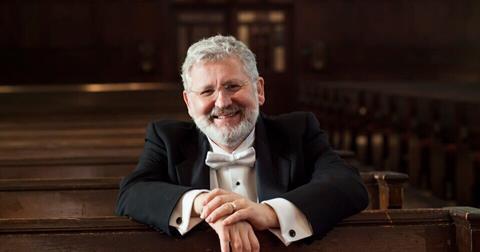
Ganz kleine Nachtmusik is a relatively brief piece in seven movements. How long does it last, all told?
John V. Sinclair: About 10 to 12 minutes, depending on your speed and if you don’t do some of the repeats. Given a reasonable tempo, the longest would be 11 to 12 minutes.
Does the trio remind you of anything else by Mozart from around this period – or by another composer, for that matter?
There are some similarities I can see with other work. I was looking at some of his early Masses, such as K65, Missa brevis in D minor [from early 1769], and I see some similarities in the ends of phrases and how he treats voices like instruments. Some of the bass writing in this Mass, which I love, is also very similar. Another piece is K34, Scande coeli limina, an Offertorium for St Benedict [from 1766], and it also has some similarities.
What’s special about the piece? What does it tell us about Mozart as a teenager, or pre-teen?
John V. Sinclair: I’m so fascinated by Mozart and what he was able to do as a prodigy. Watching the progression of his works is stunning. What I hear in this piece is the kernel of the genius we’re going to get in a few years. I always think that when I get to what he was composing at 16 or 17, I start hearing the Mozart that everyone knows. But you can see the wheels turning in his head already.
Read: Previously unknown Mozart string trio discovered in Leipzig library
Read: Important Mozart discovery to be auctioned in Berlin on 16 April 2021
Read: What is it like to play Wolfgang Amadeus Mozart’s own violin?
The number one source for playing and teaching books, guides, CDs, calendars and back issues of the magazine.
In The Best of Technique you’ll discover the top playing tips of the world’s leading string players and teachers. It’s packed full of exercises for students, plus examples from the standard repertoire to show you how to integrate the technique into your playing.
The Strad’s Masterclass series brings together the finest string players with some of the greatest string works ever written. Always one of our most popular sections, Masterclass has been an invaluable aid to aspiring soloists, chamber musicians and string teachers since the 1990s.
The Canada Council of the Arts’ Musical Instrument Bank is 40 years old in 2025. This year’s calendar celebrates some its treasures, including four instruments by Antonio Stradivari and priceless works by Montagnana, Gagliano, Pressenda and David Tecchler.


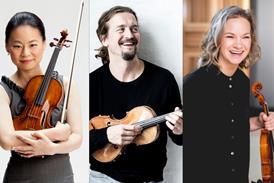
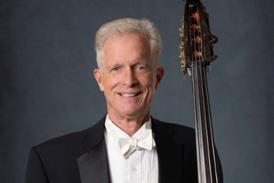

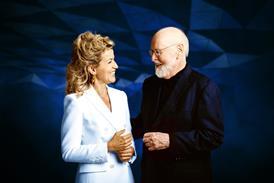


















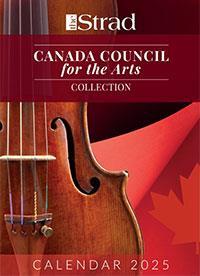












2 Readers' comments